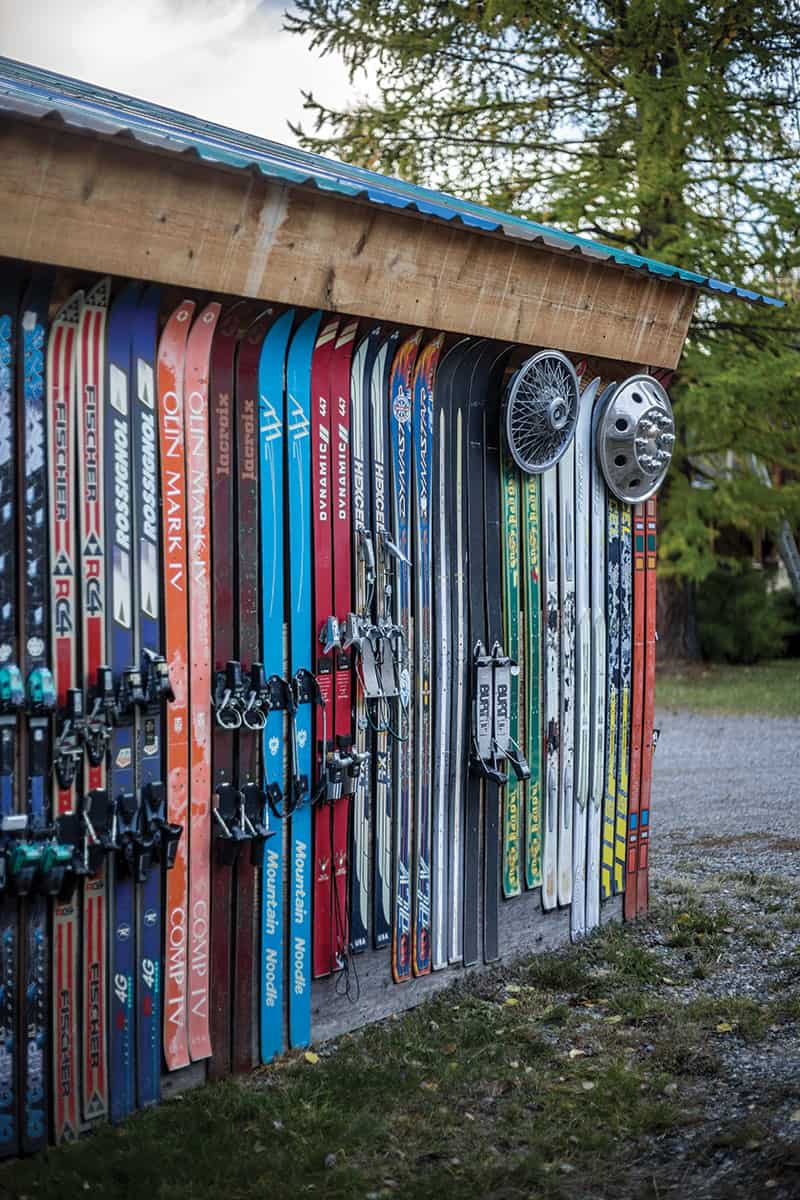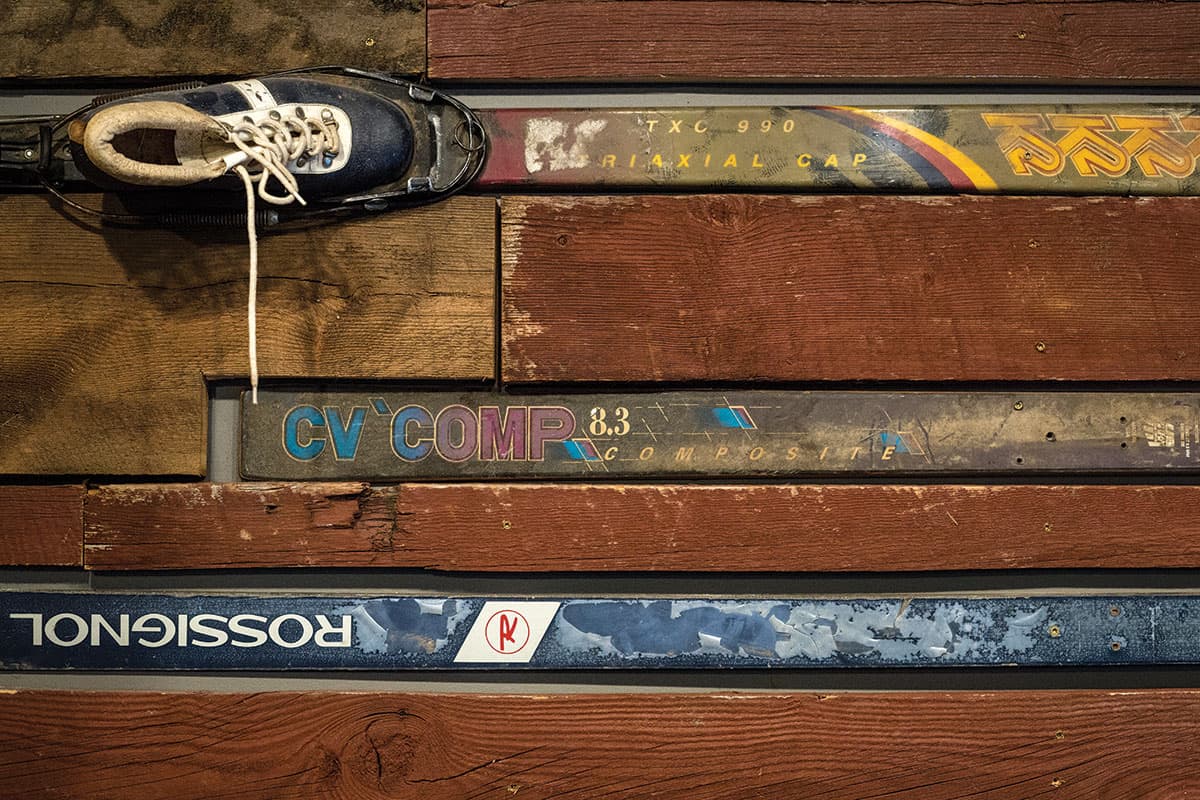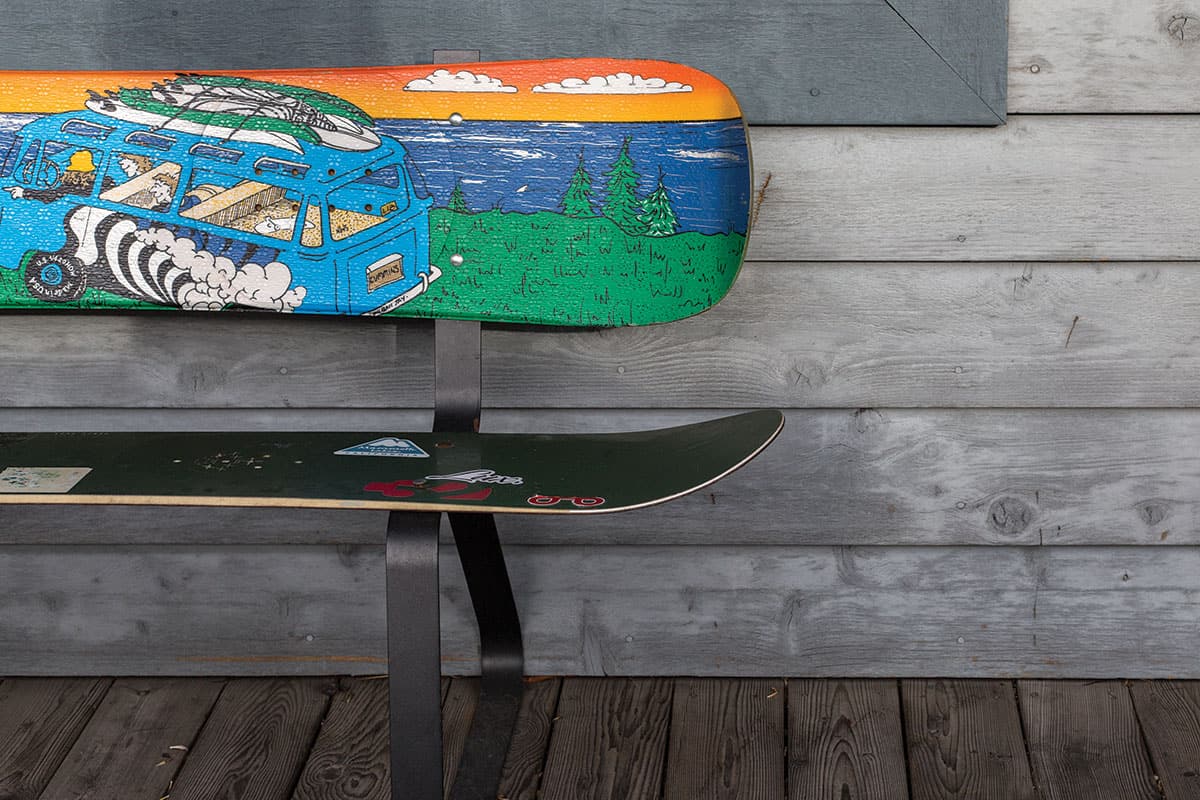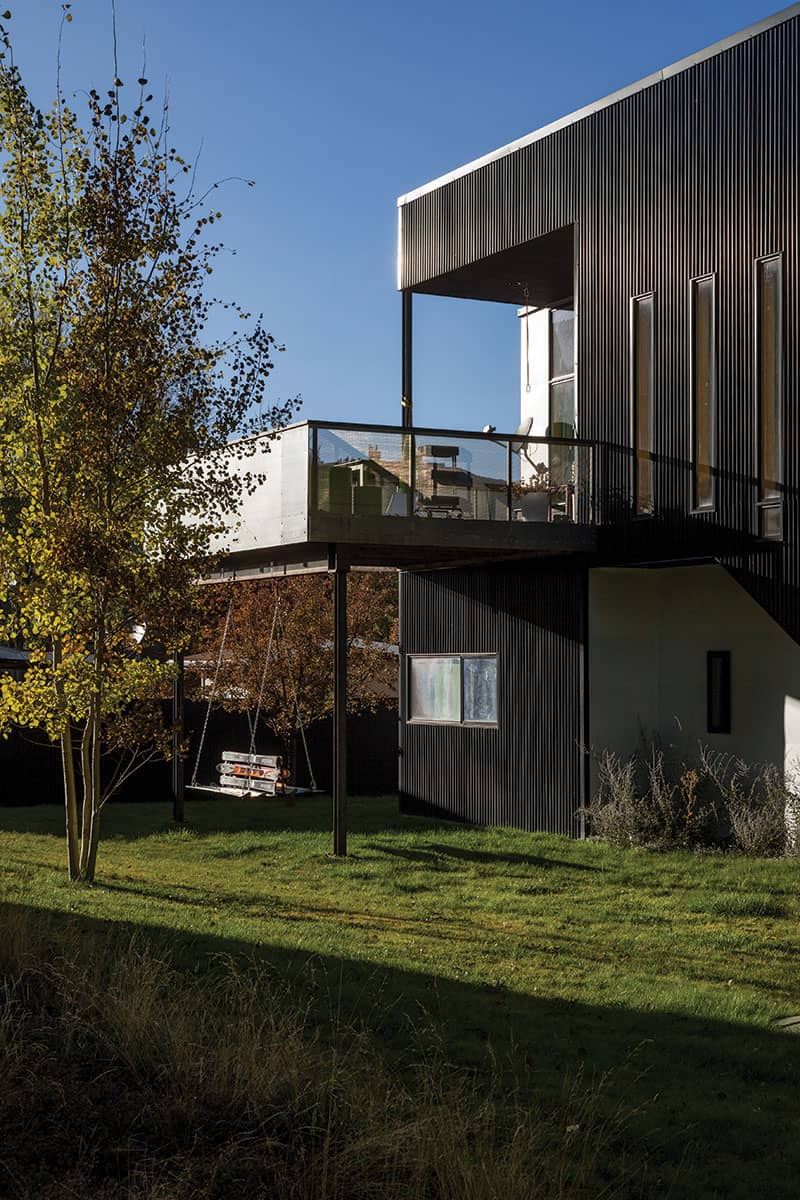Read The
Current Issue
Welcome to the Afterlife
Ski equipment—from poles to lift chairs—can live on after it retires from the slopes.
By dina mishev • Photography by ryan dorgan

A DOUBLE-SIDED swinging bench hanging outside my house is the first thing most every visitor mentions, even before they say a word about the climbing wall I personally thought was my greatest stroke of genius. This climbing wall, and the rest of the house, was carefully planned, thought out, and sought out. But the attention-stealing bench was born out of necessity: A pile of old skis had taken over a corner of my garage. What could I do with them?
Ask my boyfriend and he’ll tell you that I’m merciless about throwing things away. When I read Marie Kondo’s New York Times bestseller, The Life-Changing Magic of Tidying Up, I was like, “Seriously? This is all you’ve got? Tell me something I don’t know.” But with my old skis, every time I tried to discard them, I couldn’t. Even if Kondo herself were there in the garage with me, she couldn’t have gotten me to toss them. That’s because, according to her KonMari Method (that’s what she calls her method of tidying), I shouldn’t get rid of them because they still elicit joy.
Kondo instructs tidiers to physically handle every object they own and, while holding an item, ask themselves whether it brings them joy. When I picked up each of the seven pairs of old skis, I was filled with joy. They weren’t joyful on the slopes anymore, but the memories that flooded me when I held each pair were. And I couldn’t just throw all that happiness away.
But the ruthless purger in me hated that this joy came with no practical use. Plus I really needed the space in that corner of the garage.
The problem was solved a couple of months later while shopping for a swinging bench to hang beneath my home’s front deck. People make chairs out of skis, so why couldn’t I make a swing? A ski swing would be both joyful and useful. Ten minutes after the idea first hit me, I had a design sketched out. Ten minutes after that, when I realized my original design didn’t use enough skis, I had a new design: The swing would be double-sided. Each seat and back would be made of seven skis.
Of course, I didn’t have the skills or tools to tackle the project myself, so I shared my idea and design with local handyman Jon Wiedie. “Is this something that can be done?” I texted with a photo of my pile of skis. Having never said no to any of my prior odd projects, Wiedie again didn’t disappoint. “Looks fun,” he replied.
A couple of months after disappearing with my skis, Wiedie returned with what I think is the coolest swing ever, made entirely of my old equipment. “I’d say it was probably one of the more interesting projects I’ve done,” he says. Although he did have to work with a welder on the swing’s steel brackets, Wiedie says the hardest part of the project was the transport and hanging. “I wasn’t quite sure how to go about assembling and hanging it in the beginning,” he says. “Definitely was holding my breath a bit on the hanging part!” Wiedie estimates the swing weighs about 200 pounds. It was his first such project, but he’s not averse to doing more.
“We’ve had a few people pull Tom [Fay, her husband and owner of Moe’s] aside and point out their skis that we used. They’re really happy to see them living on.”
– Kristin Fay, Trauner Fay Designs
THERE’S NO OFFICIAL history or timeline on the upcycling of ski gear. It’s highly probable that, in the early days of making things from skis, this was not called “upcycling” but merely “practical.” Ski furniture likely started with ski bums using whatever material they had lying around—busted skis, bent poles—to create nonski stuff that made life a little nicer: a place to sit, a table to eat off, somewhere to hang coats, and a fence to keep the dog from pooping in the neighbor’s yard. Skis are a versatile construction material because of their length and flatness. Plus they’re colorful, and, if you upcycle your own skis, full of memories as well.
Today on Etsy you can buy skis repurposed as chandeliers, coat racks, photo frames, chairs, benches, headboards, bar stools, wine racks, bookshelves, tables, and business card holders. You can turn old ski poles into wind chimes in less than an afternoon (or also buy them on Etsy). While neither of the two local stores John Frechette co-owns, MADE and Mountain Dandy, sell ski furniture, “It’s fun to see skis repurposed and pop up in interior design,” he says. “It seems natural in a ski town.”
You don’t need to stop at repurposing ski equipment only. Interior designer Kristin Fay, a partner at Trauner Fay Designs, did two projects last fall for clients who wanted ski lift chairs installed on their decks. Fay designed and had a base manufactured for one of the lift chairs so that it sits on the ground. The other lift chair hangs from overhead. “We had to reinforce the area before it was hung,” she says. Both of the lift chairs were from Jackson Hole Mountain Resort. Fay had them refinished. “It was fun to add this quirky element to two big, beautiful homes,” she says. She made one of the lift chairs more comfortable by having a custom cushion created for it. “The owners wanted it to be the same red that Jackson Hole [Mountain Resort] uses,” Fay says.
Earlier in the year, Fay had a project where she did use skis: the inside of Moe’s Original Bar B Que. “There was a space where we wanted something linear with color and texture rather than doing all barnwood,” she says. “And we wanted to incorporate some of the fun, quirky elements of Jackson.” Skis were a natural choice. Fay put out a call for old skis on Facebook and “probably had no less than thirty people drop off skis at our house over a couple of months,” she says. “It was amazing how many people hold on to old skis. I had no idea.”
Fay kept the bindings on some of the skis, and one cross-country ski on the wall in the bathroom hallway still has a boot attached to its binding. “When it was dropped off, the owner was like, ‘I tried and tried to get it off. Good luck,’ ” Fay says. “And I knew there was no way I was taking it off. It was perfect like it was.” She mixed the skis in with barnwood, placing them horizontally rather than vertically. “That adds even more visual interest,” Fay says.
Aside from their role in the space’s design, the skis have proven to be great conversation starters, and also create a feeling of nostalgia in diners. “We’ve had a few people pull Tom [Fay, her husband and owner of Moe’s] aside and point out their skis that we used. They’re really happy to see them living on,” she says. And if people don’t see the skis they dropped off at the Fays, “They’ll see skis that they had when they were younger or that they learned to ski on. I knew skis would be fun for their visual interest, but I had no idea they would create such a connection with people.” I could have told Fay that after my first swing on my new bench. Physically I was in my front yard, but mentally I was in the mountains with friends, reliving all the turns I had made on the skis I was then swinging on. It was doubly joyful.
A custom double-sided ski swing by Jon Wiedie starts at $1,000. Single-sided swings are less expensive. 307/413-4356








